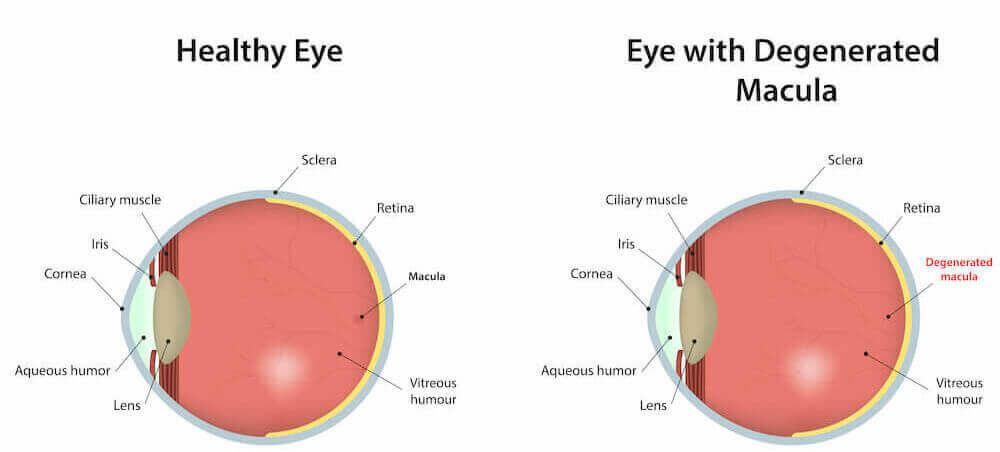As one of the leading causes of vision loss and blindness in Americans over the age of 60, macular degeneration occurs when the center part of the retina (the macula) begins to deteriorate. When deterioration begins, individuals may begin to lose their central vision that’s necessary for performing several activities such as reading or driving. Although there are no known cures for macular degeneration, it can be managed with treatments from one our trained physicians at Nevada Eye Physicians in one of our nine Nevada locations. With innovative diagnostic approaches and customized treatment plans, our physicians can help to slow or stop the progression of the disease.

Known Causes
The onset of macular degeneration is slow in most cases, with vision loss and distortion occurring similarly to other eye diseases, which is why routine eye exams are helpful. While the exact cause is unknown, research has shown that age, smoking, and genetics play a role. Other risk factors that may contribute to macular degeneration include:
- High blood pressure
- High cholesterol
- Obesity
- Being fair skinned
- Being female
- Having a light eye color
Symptoms
Patients who are diagnosed with macular degeneration will have varying symptoms depending on the type and progression of the disease. Most patients have what is known as “age-related macular degeneration” or AMD, and they will either be diagnosed with having the wet or dry form. In the vast majority of cases, patients are diagnosed with the dry form, which is incurable. However, advanced research, diagnostics, and procedure plans make it possible for patients to manage their symptoms and receive helpful treatments that delay additional progression. Both wet and dry macular degeneration are described below:
- Wet macular degeneration: Only about 10% of macular degeneration patients will have the wet form. This form occurs when abnormal blood vessels leak fluid within the retina’s central portion. Because of how rapidly this type of macular degeneration progresses, patients should seek treatment immediately once symptoms become noticeable.
- Dry macular degeneration: Approximately 80% – 90% of macular degeneration cases are of the dry form, which can destroy a patient’s central vision. This type comes on more slowly, causing blurry vision that can take years to develop. There are distinct stages to this type of degeneration, ranging from early, intermediate, to advanced. Vision loss can occur in the final stages of this form, which makes eye exams important so that treatment can begin early.
Diagnosis
There are two common ways to diagnose macular degeneration. OCT, known as optical coherence tomography, is an ophthalmology imaging method that uses light to capture high-resolution, 3D images of the back of the eye. It allows the physician to see the back of the retina and understand what is taking place. In addition, fluorescein angiography is a medical test in which a unique form of fluorescent dye is injected into the bloodstream. As the dye moves through the bloodstream, it accentuates and highlights the blood vessels in the back of the eye. The eye is then photographed for diagnostic purposes to detect retinal disorders.
Treatment and Prognosis
Although macular degeneration does not have a formal cure, there are numerous treatments that can be applied and performed to slow the progression and improve symptoms. Anti-VEGF medications are used on many patients, and as injections such as Avastin, Lucentis, and EYLEA chemically shrink the abnormal blood vessels to help improve central vision. These treatments are applied and need to be repeated depending on the severity of the disease.
Seek Help Today
Macular degeneration can greatly affect the vision of those who suffer from it. At Nevada Eye Physicians, our experienced eye care professionals provide comprehensive diagnostic testing and treatment for patients with macular degeneration. Contact one of our Nevada facilities today to learn more and to schedule your consultation today.



